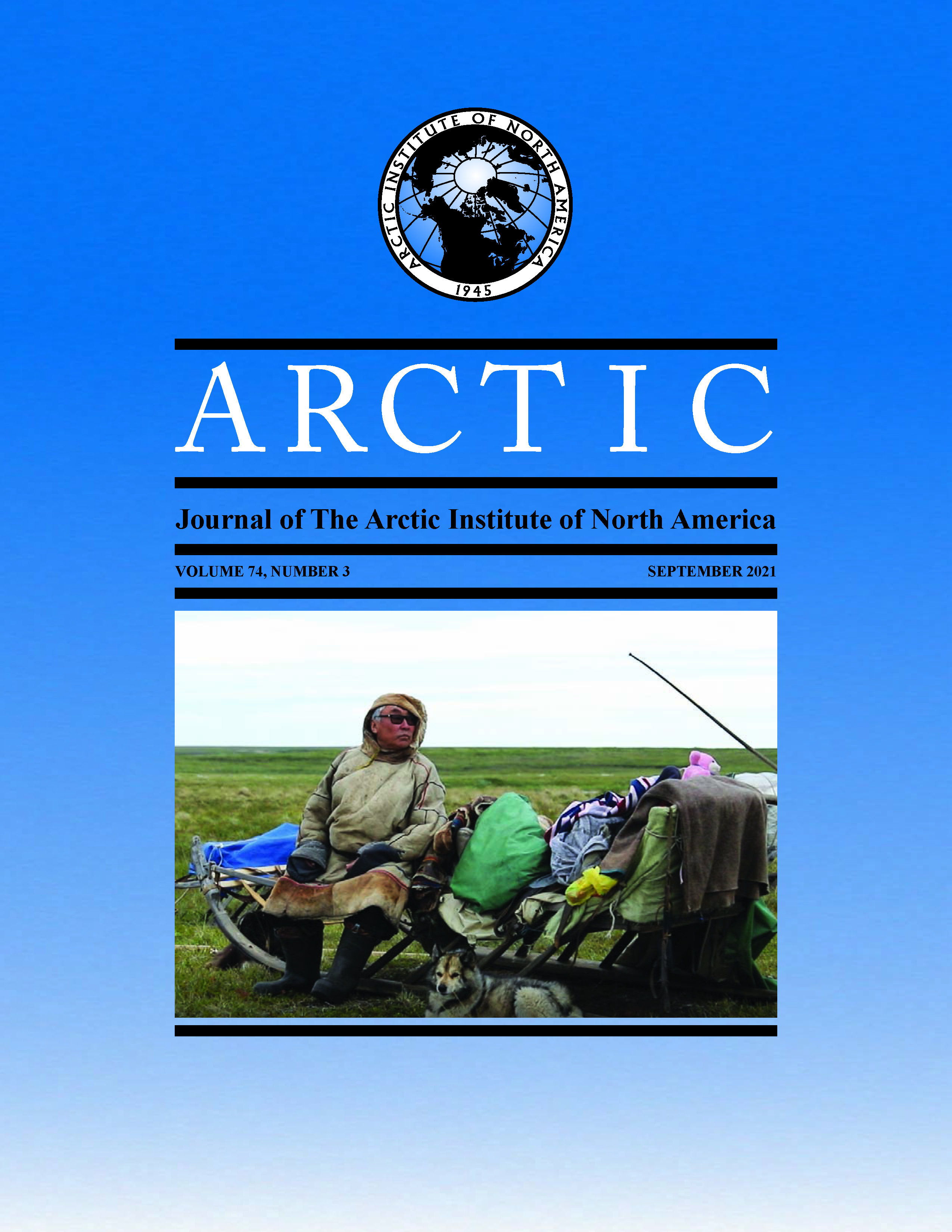Iñupiaq Knowledge of Polar Bears (Ursus maritimus) in the Southern Beaufort Sea, Alaska
DOI :
https://doi.org/10.14430/arctic73030Mots-clés :
Alaska; connaissances autochtones; Iñupiaq; nanuq; ours polaires; Ursus maritimusRésumé
La gestion réussie de la faune dépend des efforts de coordination et de consultation avec les collectivités locales. Toutefois, il arrive souvent qu’une grande partie de la recherche utilisée pour éclairer la gestion dérive uniquement des données recueillies directement de la faune. Les peuples autochtones qui vivent dans l’Arctique entretiennent des liens étroits avec leur environnement, ce qui crée des occasions uniques d’observer l’environnement et l’écologie des espèces de l’Arctique. Il y a également lieu de remarquer que la plupart des collectivités du nord de l’Arctique se trouvent dans l’aire de répartition des ours polaires (nanuq, Ursus) et connaissent d’importants changements climatiques. Dans le cadre de cette étude, nous nous sommes appuyés sur des entrevues semi-structurées réalisées entre 2017 et 2019 pour documenter les connaissances des Iñupiaq au sujet des ours polaires découlant d’observations échelonnées sur quatre décennies dans quatre collectivités de l’Alaska situées dans l’aire de répartition de la sous-population d’ours polaires du sud de la mer de Beaufort : Wainwright, Utqiaġvik, Nuiqsut et Kaktovik. Les 47 participants, sauf un, ont décrit des changements directionnels et remarquables en ce qui a trait à la glace de mer, dont des débâcles plus hâtives, le retour plus tardif de la glace, de la glace plus mince et moins de banquises pluriannuelles. Ces changements correspondent aux observations d’ours qui passent plus de temps sur la terre ferme en fin d’été et en début d’automne au cours des dernières décennies. Ces observations coïncident avec les études sur les connaissances scientifiques et autochtones réalisées en Alaska, au Canada et au Groenland. Les participants ont fait remarquer que la condition corporelle des ours polaires et des phoques ainsi que leur abondance à l’échelle locale variaient d’une région à l’autre ou n’affichaient aucune tendance. Cependant, les participants ont décrit un phénomène récent selon lequel les ours sont épuisés et léthargiques lorsqu’ils arrivent sur la rive à l’été et à l’automne, après avoir parcouru de longues distances à la nage depuis les banquises. Aussi, plusieurs participants ont laissé entendre que les aires de mise bas se retrouvent plus souvent sur la terre ferme que sur la glace de mer. Les participants ont indiqué que le gouvernement des villages et les gouvernements régionaux ont de plus en plus de difficulté à obtenir les ressources nécessaires pour assurer la sécurité de leurs collectivités, car les ours polaires passent plus de temps sur la terre ferme, un enjeu qui risque de s’aggraver, tant dans cette région qu’ailleurs, à mesure que la glace de mer continuera de perdre de l’ampleur.



